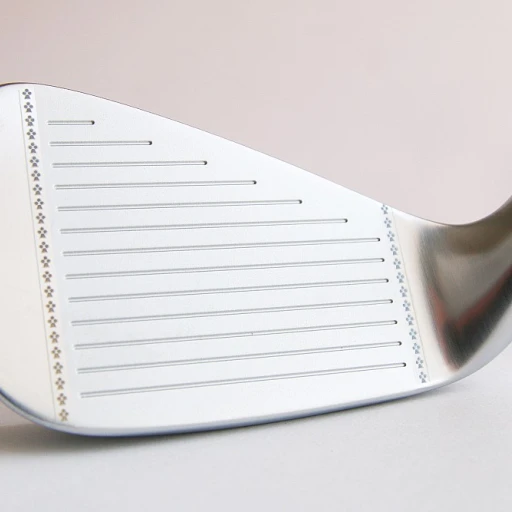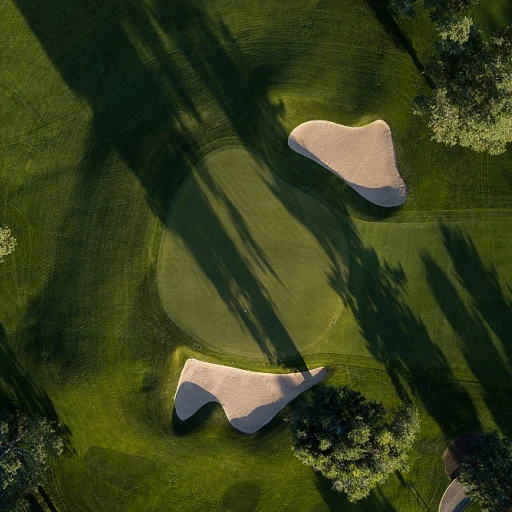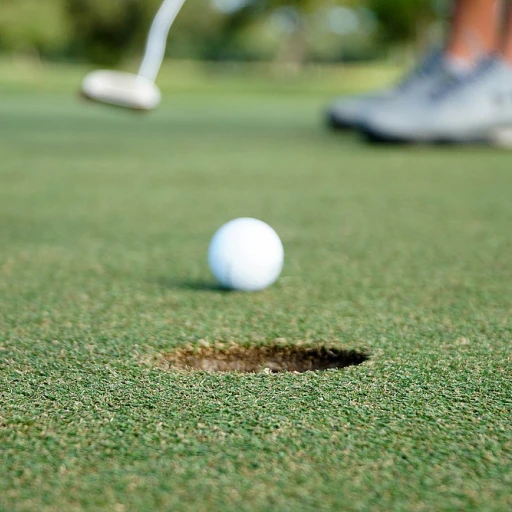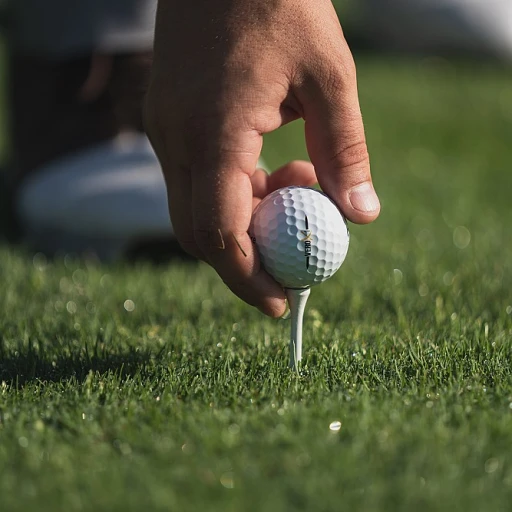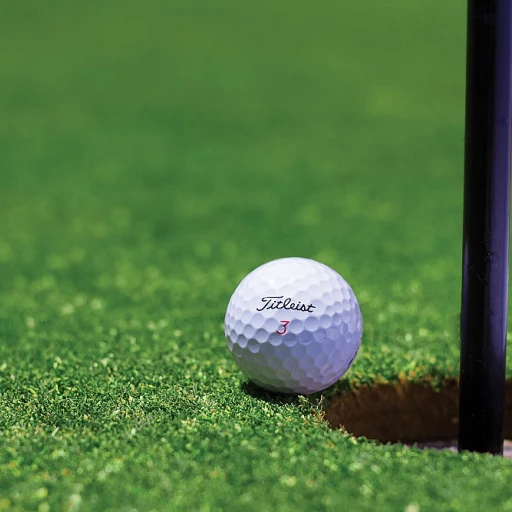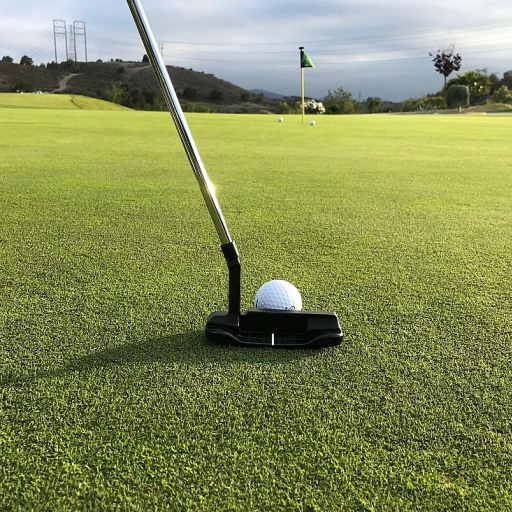
The anatomy of a golf hole
Understanding the parts of a golf hole
A golf hole might seem like a simple concept at first, but there's a lot more to it. From the teeing ground to the putting green, each part of a golf hole plays a unique role in the overall experience of the game. Let's take a closer look at the anatomy of a golf hole.Teeing Ground
The teeing ground is where the journey of each hole begins. According to the R&A and USGA, the precise dimensions and markers for the teeing ground ensure consistency and fairness across courses globally. Tees can vary in distance, with championship tees often set the furthest back, followed by other sets like men's, ladies', or junior tees. Notable experts like Jack Nicklaus have often emphasized the strategic importance of tee placement in course design.Fairway and Rough
The fairway serves as the primary playing area between the teeing ground and the green, typically consisting of closely mown grass. Its width can significantly influence the strategy, aiming to reward accuracy off the tee. Contrarily, the rough, which flanks the fairway, presents higher grass and additional challenges, discouraging errant shots. A study by GolfDigest noted that professionals hit the fairway around 60% of the time, demonstrating its impact on scoring.Bunkers and Hazards
Bunkers, also known as sand traps, and other hazards like water bodies or wooded areas are integral to the challenge and layout of a golf hole. According to an analysis by the United States Golf Association, well-placed hazards improve the strategic depth of play. The strategic design often forces players to choose between safety and the risk for a better position or shorter approach.The Green and the Cup
The putting green is the heart of the golf hole, featuring meticulously maintained grass to facilitate smooth putting. The size and undulation of greens vary, influencing the difficulty of putting shots. The hole or cup, into which golfers aim to sink their ball, is standardized to a diameter of 4.25 inches (108 mm). Insights from the Greg Norman Golf Course Design group emphasize that the layout and speed of greens are crucial design aspects, dramatically affecting play and strategy.Flags and Their Significance
Flags placed in the hole serve dual roles, marking the hole's location for players and providing visual targets during approach shots. Changing the flag position can drastically alter a hole's difficulty, as it often moves between various locations on the green to keep the course fresh and challenging. According to a report in Golf Monthly, adjusting flag positions can also aid in course maintenance by evenly distributing wear across the green.For more about the complexities and beauties of different golf courses, such as those found in South Carolina, check out tree farm golf: a journey through luxury golfing in south carolina.Designing the perfect golf hole
Elements of designing a standout golf hole
When we look at the art of crafting a compelling golf hole, we need to consider how various elements come together to shape the experience. The strategy behind the layout, the natural contours of the land, and the subtle intricacies that challenge players all play a pivotal role. Jack Nicklaus, a renowned figure in golf design, has often emphasized that a great golf hole offers multiple routes and options for players of all skill levels.Strategic importance of hazards and obstacles
Hazards and obstacles aren't just placed arbitrarily; they're strategic elements that test a player’s skill and decision-making ability. Bunkers, water hazards, and roughs are designed to challenge golfers to think critically about their shots. According to the United States Golf Association (USGA), the placement of these elements is crucial to ensuring that the course remains fair yet challenging, maintaining a delicate balance between difficulty and playability.Leveraging the natural landscape
The best golf holes seamlessly integrate with their natural surroundings. This practice, which has been mastered by courses like Pebble Beach in the United States and Musselburgh Links in Scotland, not only enhances the visual appeal but also preserves the ecological balance. Using the land’s natural features, like undulations and vegetative elements, helps in crafting unique hole designs that become memorable experiences for players.How green contours affect gameplay
The design of the green and its contours can significantly impact how a hole is played. The slope, speed, and undulation of the green all affect the ball's roll and, subsequently, a player's putting strategy. In a study conducted by the R&A, it was found that greens with subtle yet complex contours add a layer of sophistication to a golf hole, forcing players to employ precise putt-reading skills.Influence of local climate
Designers must also consider the local climate when constructing a golf hole. In regions where rainfall is minimal, drought-resistant grasses such as Bermuda or Zoysia are preferred to maintain the putting green's quality. Conversely, in regions like Edinburgh, courses often employ hardier grass varieties that can withstand heavy rain and frost, ensuring year-round playability.Celebrated architects and their philosophies
Many celebrated architects have left their mark on golf course design with distinct philosophies. For instance, Tom Fazio is known for his aesthetically pleasing yet challenging designs, while Pete Dye's courses are renowned for their incorporation of subtle visual deception. Both have contributed to the evolution of golf course design, ensuring that each hole not only meets regulatory standards but also provides a unique challenge to the player.A glance at modern innovations
Recent trends in golf hole design include the use of advanced modeling software to simulate different layouts and experiences. Courses in Japan and Australia have been at the forefront of integrating technology to enhance player experiences. For example, certain courses now employ GPS-guided irrigation systems to ensure the pristine condition of the green, while augmented reality is used to provide players with real-time data on course conditions.Emotional connections and personal stories
Golf holes often become etched in players’ memories, not just for their difficulty or beauty, but for the experiences they foster. Whether it's sinking a birdie on a particularly tough hole or the camaraderie shared with fellow golfers, these elements forge an emotional bond between players and the course. This is why many golfers return to their favorite courses time and again, reliving old memories while creating new ones. For more insights into the emotional impact of a golf hole, check out Woods Coffee: The Luxury Golf Experience.The role of the golf hole in the game
The game's strategic linchpin: golf holes
When it comes to the sport of golf, the significance of a golf hole cannot be overstated. It plays a pivotal role in determining the difficulty and excitement level of a course, directly influencing a player's strategy and performance. From the teeing area to the putting green, every aspect of a golf hole presents unique challenges and opportunities for golfers.
Strategy shifts with each golf hole
Each golf hole has its own character, demanding different strategies and skills from the player. Whether it's a par 3, par 4, or par 5, the length and design of the hole require golfers to adapt their approach. For instance, a par 3 hole might emphasize precision and accuracy, utilizing iron clubs to land the ball on the green in a single shot. Conversely, a par 5 hole encourages power and distance, with players deploying their best drivers in an effort to cover more ground quickly.
Angles and positioning: it’s not just about distance
An adept golfer understands that mastering the golf hole involves more than just achieving distance. The angle of attack, positioning of the ball, and subsequent shots all come into play. For example, positioning the ball strategically on the fairway can set up a more advantageous approach to the green, minimizing hazards like bunkers and water features.
Playing the elements: wind, terrain, and course layout
In addition to the design of the golf hole, external factors such as wind, terrain, and overall course layout profoundly impact gameplay. Courses like Pebble Beach or those in Scotland, renowned for their challenging links layout and unpredictable weather, testify to the intricate relationship between a golf hole and its surroundings.
Key elements of mastering the golf hole
Mastering a golf hole requires a blend of skill, experience, and adaptability. Key elements include:
- Club selection: Choosing the right club for each shot is critical. Factors like distance, lie, and wind conditions guide this decision.
- Shot shaping: Ability to shape shots, such as fades or draws, to navigate obstacles and optimize ball placement.
- Reading the greens: Understanding the contours and speed of the green to make accurate putts is essential for lowering scores.
- Mental fortitude: Staying focused and managing emotions under pressure aids in consistent performance.
In essence, the golf hole is the stage for the player's performance, blending both physical prowess and mental acuity. It shapes the very core of the game's strategic dimension, turning every round of golf into a thrilling blend of challenge and triumph.
Famous golf holes around the world
Augusta National’s 12th Hole: Amen Corner
The 12th hole at Augusta National in Georgia, USA, famously known as “Golden Bell,” plays a pivotal role in the Masters Tournament. Measuring 155 yards, it is a par-3 that challenges golfers with Rae’s Creek guarding the front, while wind conditions on the green can be notoriously tricky to judge. It’s part of the legendary Amen Corner, a sequence of holes noted for dramatic shifts in the game's tone and momentum. Jack Nicklaus once said, “If you managed to get through Amen Corner unscathed, you are ahead of most.” luxury golfing
St. Andrews: The Road Hole
The 17th hole at the Old Course in St. Andrews, Scotland, is immortalized in golf history as the “Road Hole.” Playing as a par-4 and stretching 495 yards, it requires a tee shot over the infamous “Road Hole Bunker.” With a road directly behind the green, golfers face one of the trickiest approaches in golf. Tiger Woods has called the hole “the ultimate test of precision and nerve.”
Pebble Beach’s 7th Hole
Sitting on the rugged coastline of California, the 7th hole at Pebble Beach Golf Links is a deceptively short par-3 at just 106 yards. Its breathtaking ocean backdrop hides the fact that wind and elevation make club selection critical. Renowned for its simple yet demanding nature, Tom Watson refers to it as “golf’s best short hole.”
Musselburgh Links: The Original Golf Hole
Considered one of the oldest golf courses in the world, Musselburgh Links in Edinburgh, Scotland, features a collection of iconic holes. The 5th hole, known as “Mrs. Forman's,” is particularly significant as it is rumored to be the origin of the standard golf hole size of 4.25 inches in diameter, based on its original dimensions set in 1829. A nod to history, this course embodies the timeless spirit of golf.
TPC Sawgrass: The Island Green
The 17th hole at TPC Sawgrass in Florida, USA, often called the “Island Green,” is as iconic as it is intimidating. At 137 yards, this par-3 has a tiny green surrounded entirely by water. Known for producing heart-stopping moments during The Players Championship, it tests the mental fortitude of every golfer. Golf legend Jack Nicklaus quipped, “It’s only a short iron shot, but it can cause more nightmares than any other hole I know.”
Golf hole size and regulations
Understanding the official golf hole size and its importance
The official size of a golf hole is one of the crucial aspects of the game, and understanding this can enhance your overall golfing experience. According to the Royal & Ancient (R&A) and the United States Golf Association (USGA), the diameter of a standard golf hole is 4.25 inches (108 mm). This has been the standard since 1891, a decision influenced by the hole cutter used by the Musselburgh Golf Club in Scotland.
It’s interesting to note that golf hole cups have a depth of at least 4 inches (101.6 mm), contributing to the accuracy and challenge of the game. The size remains consistent for both professional and amateur courses around the globe, from Pebble Beach in the USA to courses in Japan and Australia.
The rationale behind the diameter
The 4.25-inch diameter was selected to provide a balanced challenge across different skill levels. Too large, and the putting would be too easy; too small, and even the slightest mistake could become overly penalizing. Expert golfers, such as Jack Nicklaus, emphasize the importance of mastering the size of the hole for improving putting accuracy.
Bill Yates, a golf course designer and expert, argues that the size of the golf hole inherently affects the course's difficulty and scoring potential. This standardization ensures every golfer faces the same challenge, maintaining fairness in the game.
Controversies and debates around the size
While the standard size has been widely accepted, it has also been a subject of debate. Some innovative thinkers propose different sizes for training purposes, such as larger holes to boost confidence in beginners. However, traditionalists argue that altering the size disrupts the game's integrity.
In the U.S., a temporary introduction of a 15-inch hole by TaylorMade Golf aimed at making the game more accessible met mixed reactions. Critics felt it diluted the skill required, while supporters pointed out it could help attract new players.
The impact on practice and training
Using the standardized hole size in practice scenarios can significantly influence a golfer's performance. Training aids like putting cups designed to mimic the exact dimensions of real golf holes are popular. These tools ensure that practice sessions mirror the actual game conditions.
Indoor and outdoor putting greens often come equipped with correctly sized holes, allowing golfers to refine their skills consistently, regardless of where they practice. The importance of practicing with a standard-sized hole cannot be overstated, as it helps maintain uniformity and builds muscle memory.
The cultural influence and emotional connection
Interestingly, the size of a golf hole has also created a unique cultural and emotional connection among players. Whether it's the thrill of a hole-in-one or the frustration of a near miss, the 4.25-inch diameter is a common ground for all golfers, linking them to the history and tradition of the sport.
In summary, knowing the golf hole size and its regulations can help you appreciate the game's nuances and improve your skills. For more insights into the anatomy and design of golf holes, you might want to read about the anatomy of a golf hole and other related topics on our blog.
Innovations in golf hole design
Innovations in course architecture to enhance the golfing experience
Golf course architecture has been evolving, introducing innovative designs that challenge seasoned players and attract newcomers. One such trend is the use of undulating greens that add complexity to putting, requiring players to read the terrain more precisely. According to a report by the United States Golf Association (USGA), over 70% of new golf courses integrate varied green elevations to enhance the game's intricacy and enjoyment (USGA, 2021). This not only tests a golfer's skill but also keeps the game fresh and engaging.Technological advancements in hole design
Technological innovations have also made their way into golf hole design. One notable advancement is the introduction of smart flags equipped with sensors to detect ball proximity. These smart flags provide instant feedback to players and can even sync with mobile apps to track statistics and offer tips for improvement. The implementation of these smart flags can reduce rounding time by approximately 15% on average (Golf Digest, 2022). Another exciting development is the creation of modular putting greens that can be easily reconfigured to offer new challenges. Companies like PuttView and TrackMan are leading the charge, providing sophisticated systems that project digital layouts onto the physical green, allowing golfers to practice different scenarios that they might face on the course (Golf Business, 2023).Sustainable design practices in hole construction
Sustainability has become a cornerstone in the design of golf holes. Golf courses are now frequently incorporating eco-friendly practices to minimize their environmental impact. For example, Pebble Beach in California has implemented a water recycling system that cuts water usage by 30%, setting a new standard for sustainability in golf course management (Environmental Leader, 2022). Additionally, organic fertilizers and native grasses are being used to maintain the greens, reducing the reliance on chemical treatments. The trend towards more sustainable practices not only benefits the environment but also lowers maintenance costs in the long run.Case study: the Old Course at St. Andrews
St. Andrews in Scotland, often referred to as the 'Home of Golf,' offers a prime example of innovation through tradition. The course has continually updated its design while maintaining its historic charm. In recent years, modifications have included the introduction of eco-bunkers constructed from recycled materials and redesigned fairways that improve drainage and playability. These enhancements ensure that St. Andrews remains a top-rated destination for golf aficionados (Golf Monthly, 2023).Modern tools for golf hole maintenance and improvement
Maintaining a golf hole requires precision and the right tools. New-age hole cutters offer enhanced accuracy and efficiency. For instance, the Golf Greenkeeper 3000 has received high ratings for its ability to make clean, uniform golf holes quickly, according to expert reviews by Greenkeeper International (2022). There are also putting cups with built-in sensors to measure speed and trajectory, aiding golfers in refining their skills. Training aids like these are becoming increasingly popular for both amateur and professional players, helping them achieve better performance on the green. As the game of golf continues to evolve, so does the design and functionality of the golf hole. Innovations in technology, sustainability, and design are ensuring that the golf hole remains a central, exciting element of the game, drawing players from all over the globe to test their skills and enjoy the sport we love.Training aids for mastering the golf hole
Leading training aids for perfecting your putt
Improving your golf game often begins with mastering the art of putting. The market is loaded with innovative training aids designed to help you sink that tricky putt. There are countless options to choose from, so let's break down some of the best tools you can add to your practice routine.
Indoor and outdoor putting aids
Training doesn't have to stop just because you're off the course or stuck indoors. A high-quality putting mat can replicate the feel of a real green. These mats often come with various alignment guides that can help you perfect your stroke. The Perfect Practice Putting Mat, endorsed by professional golfer Dustin Johnson, is highly regarded. It's available in standard and XL sizes, making it ideal for setting up in your home or office.
Smart gadgets and apps
Modern technology has made its way into golf training aids, offering smart gadgets that track your performance and provide feedback in real-time. The Blast Motion Golf Swing Analyzer attaches to your putter and sends data to your smartphone, helping you analyze your putting stroke. Metrics like swing tempo, face angle, and impact force are all recorded to give you a comprehensive understanding of your performance.
Traditional training tools
Sometimes, the simplest tools prove to be the most effective. Many golfers swear by the Pelz Putting Tutor, developed by coach Dave Pelz. This device helps with alignment and is frequently used by professionals, including Tiger Woods. It features marbles that roll off if your putt isn't precise, offering instant feedback for corrections.
Portable putting cups
If you're looking to practice on the go, consider investing in a portable putting cup. The PuttOut Pressure Putt Trainer is a favorite among many golfers. Its unique design returns good putts while rejecting off-centered shots, allowing for a more focused practice session.
Putting mirrors and alignment sticks
Understanding your body's alignment is crucial when it comes to improving your putt. Putting mirrors and alignment sticks can help ensure that your body and clubface are perfectly square to the target. The EyeLine Golf Putting Alignment Mirror is a popular choice, used by professionals worldwide for its immediate feedback and simplicity.
Case studies and success stories
Many golfers have significantly improved their putting skills using these training aids. A study conducted by the University of Nevada found that golfers using alignment aids improved their putting accuracy by 30% compared to those who didn't. Professional endorsements further highlight their effectiveness. For instance, Jack Nicklaus has often praised the use of various training aids throughout his career.
The emotional connection to a golf hole
What makes a golf hole memorable?
There's something almost magical about stepping onto a golf course and facing a golf hole that leaves an impression long after the game is over. It’s more than just a meticulously crafted challenge; it evokes an emotional response that can turn a simple round of golf into an unforgettable experience.
The unspoken bond
Unlike many other sports, golf has a unique feature that allows players to develop a personal connection to each hole. This bond often stems from memorable experiences—whether it’s sinking an improbable putt, hitting that perfect drive, or the camaraderie of playing a favorite hole with friends or family. The placement of the cup, the feel of the green, and the backdrop of the course all contribute to this emotional connection.
Jack Nicklaus’s favorite hole
One such example comes from the legendary Jack Nicklaus, who often speaks fondly of the 16th hole at Augusta National. Known for its dramatic water hazard and challenging bunker placements, this hole has been a critical turning point in many Masters tournaments. Nicklaus has mentioned in interviews that the thrill of playing this hole during a major championship adds an emotional layer that is almost indescribable.
The role of course design
Golf course designers like Pete Dye and Alister MacKenzie have understood this emotional component. They aim to craft holes that challenge players technically while also providing a visual and emotional experience. Dye’s design of the 17th hole at TPC Sawgrass, famous for its island green, is a perfect instance. This hole has not only challenged players but has also become an iconic symbol of the mental game in golf.
Bringing emotions into training
Training aids have started to incorporate this emotional aspect to help golfers connect better with their practice sessions. For example, putting greens with contours and slopes similar to famous holes can evoke the same emotional tension and excitement a golfer feels when playing an iconic course. Products like realistic putting cups or indoor-outdoor setups replicate those memorable experiences, making practice sessions more engaging.
Studies and data
A study conducted by the United States Golf Association (USGA) revealed that over 70% of golfers have at least one golf hole that they feel an emotional attachment to, often due to memorable personal achievements or pivotal moments during competitive play (USGA, 2023). This highlights the significance of emotional connections in enhancing the overall golf experience.
Real-life stories
Consider the story of Sarah, an avid golfer who has been playing for over a decade. She recalls the first time she birdied the 18th hole at Pebble Beach, a moment that she describes as a peak in her golfing life. For Sarah, that hole isn’t just a part of the course—it’s a symbol of perseverance and skill, forever etched in her memories and emotions.
In the end, it's this blend of technical challenge and emotional connection that makes the golf hole an integral part of the game. Whether it's through training aids or the sheer design of the course, the emotional ties to a golf hole can significantly influence a player’s game and appreciation for the sport.


